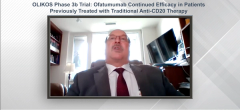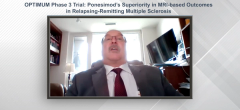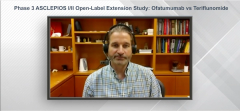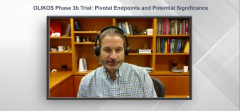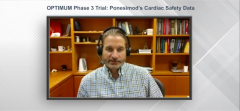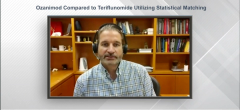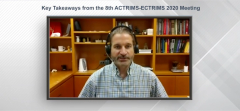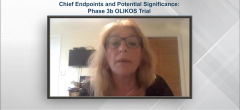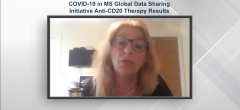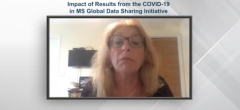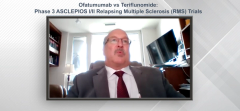
Phase 3 ASCLEPIOS I/II Open-Label Extension Study: Ofatumumab vs Teriflunomide
Episodes in this series

Data from the phase 3 ASCLEPIOS I/II open-label extension study, differentiators between anti-CD20 agents, and the role patient decision-making may play in treatment choice.
Robert Naismith, MD: We just had approval of ofatumumab within the last month or so. It was studied in a phase 3 program called ASCLEPIOS. That study is in long-term extension—ALITHIOS. Dr Hauser and colleagues presented a poster at ECTRIMS looking at patients who were newly diagnosed with MS [multiple sclerosis] who were previously untreated. This represented about a third of the ASCLEPIOS population. Patients were defined as having had the diagnosis within the past 3 years and not having been on any prior treatments. What they found is that when compared with teriflunomide, relapses were reduced by about 50%. Gadolinium-enhancing lesions were reduced by about 95% by year 2. T2 lesions were reduced by 82%. Just looking at the T2 lesions within the second year, those were reduced by over 90%.
In addition, they looked at year 2 NEDA [no evidence of disease activity]. It’s been somewhat of an aspirational end point that incorporates relapses, MRI lesions, and progression. In looking from year 1 to year 2, they found that NEDA rates were about 92%. Overall, the results are very strong in the primary study, ASCLEPIOS, across all patient groups. But in this earlier-diagnosed cohort, we see very strong results with high NEDA rates when you re-baseline and look at it over the second year of the trial.
What we’re finding is that the anti-CD20s, as a class, are highly effective in relapsing forms of MS. We’re seeing really tremendous imaging results with all these different therapies. We have 2 approved: ocrelizumab and ofatumumab. They demonstrate remarkable reductions in new and enhancing lesions.
Ocrelizumab has been presenting additional data on phase 4 programs. One of them is called ENSEMBLE, which is looking at an infusion that given at a faster rate. Instead of the 3½-hour infusion, it’s a 2-hour infusion. Similar to the ASCLEPIOS analysis, they’re finding that NEDA rates in the second year are above 75%, 80%, 85%. In relapsing forms of MS, we are seeing excellent results with all the anti-CD20s, which is very fortunate for patients. This gives us some great options.
Now that we have a couple anti-CD20s to choose amongst, and both look like they have excellent efficacy and very balanced safety, one of the main differentiators, obviously, is the route of administration. Ocrelizumab is traditionally infused over 3½ hours. In practicality, that means the time—getting to the infusion center, getting a seat and IV [intravenous], and then mixing up the medication, being observed afterward—could pretty much be the full day. This may reduce it to half a day, and regulatory agencies are looking at this more carefully.
Some patients would rather do an injection at home, and that would be 12 injections per year instead of 2 infusions per year. Patient decision-making will factor into treatment selection. I don’t have a great sense in these early days as to where things will go. I suspect patients will, in large part, want to do more injections at home, especially for new starts. I also feel like patients on ocrelizumab, at least in the short term, are probably going to feel comfortable sticking with what they know, which is coming in for the infusions.
The coronavirus pandemic is a bit of a concern, but the hospitals, in general, are taking very strong precautions. Patients still have reluctance, perhaps, but there’s a lot of screening and rigorous cleaning and mask wearing in the hospitals. Overall, hospitals are not a likely place to get it, relatively speaking.
Newsletter
Keep your finger on the pulse of neurology—subscribe to NeurologyLive for expert interviews, new data, and breakthrough treatment updates.

